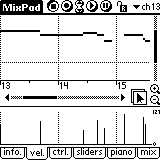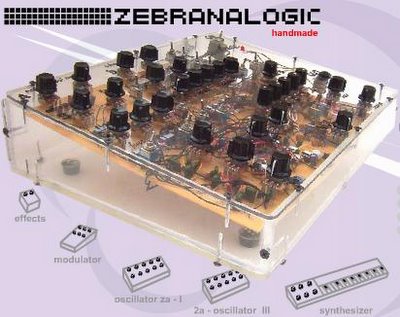Japan - Ghosts Live (1982). Synths used for texture.

And of course.... Van Halen's JUMP. Synths used for dust.

Look at how dusty that OB-Xa is!!! Eddie is just smiling away. No respect I tell yah. No respect...
EVERYTHING SYNTH


 Title link takes you to shots pulled from this auction. More info on the Wavedrum on SOS and SonicState.
Title link takes you to shots pulled from this auction. More info on the Wavedrum on SOS and SonicState.

 Title link takes you to Seth Elgart's website. I recently posted Jim Aikin's thoughts on Melody Over Texture. This came from a thread on SynthSights on the topic of the musician and the synthesist and the topic of sound and texture driving a piece of music vs. the musician driving the melody and composition. Seth put up a couple of examples of Music vs. Sound. In one track, Fifty Five, he gets lost in textures from the Waldorf Q, he states that Q drives the composition itself (BTW, this is a good demo of the Waldorf Q 's swirly textures). He states, "It more or less wrote itself. I didn't have much to do with it really. I just played it." In another track, Celebrate Life, Seth critically composes and drives the music. It's interesting when you think about how you create music. I lean more towards the sound leading me - it seems more like an interaction between me and the synth. Two things immidiately come to mind when I think about this, one, Bob Moog's magical description of how you feel sound and the instrument - how you connect to it in an almost metaphysical way; and two, this video of Jean Michel Jarre where he talks about leaving room for the music to drive itself. How do you play?
Title link takes you to Seth Elgart's website. I recently posted Jim Aikin's thoughts on Melody Over Texture. This came from a thread on SynthSights on the topic of the musician and the synthesist and the topic of sound and texture driving a piece of music vs. the musician driving the melody and composition. Seth put up a couple of examples of Music vs. Sound. In one track, Fifty Five, he gets lost in textures from the Waldorf Q, he states that Q drives the composition itself (BTW, this is a good demo of the Waldorf Q 's swirly textures). He states, "It more or less wrote itself. I didn't have much to do with it really. I just played it." In another track, Celebrate Life, Seth critically composes and drives the music. It's interesting when you think about how you create music. I lean more towards the sound leading me - it seems more like an interaction between me and the synth. Two things immidiately come to mind when I think about this, one, Bob Moog's magical description of how you feel sound and the instrument - how you connect to it in an almost metaphysical way; and two, this video of Jean Michel Jarre where he talks about leaving room for the music to drive itself. How do you play?
 Title link takes you to Tim Wade's blog on the ORT Synthesizer. Thanks Tim!
Title link takes you to Tim Wade's blog on the ORT Synthesizer. Thanks Tim! 
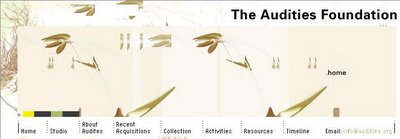
 Another via Mattias. It's a wall of oscilloscopes. Title link takes you to a bigger shot. Also make sure to check out Mattias' site.
Another via Mattias. It's a wall of oscilloscopes. Title link takes you to a bigger shot. Also make sure to check out Mattias' site.
 Title link takes you to the SynthModules site. The PSIM-1 is currently sold out. Details on the PSIM-1: "The heart of this module is a powerful miniature computer (microcontroller) that processes 100,000 instructions per second. It is programmed with your Windows based PC in a simple and easy to learn form of BASIC. Each of the four analog outputs can be programmed to output 1V/Octave CV-OUT as a pattern sequencer and complex event generator, or simply as a gate. This is just the beginning. Use any of its four analog outputs as a programmable LFO to gate your ADSR and set up extremely complex filter sweeps. Clock your Binary Zone with complex events. Imagine what you can do with your filters! Generate CV along with extremely complex sequences that are only limited by your imagination. Unlike most typical analog sequencers, you can change the timing of the spaces between notes and/or gates. Like I said, this is all just the beginning. Additional add-on modules will follow. Unlike a one-time programmable ROM, you can change the program anytime you wish by simply plugging in a cable and downloading the changes to your module. The program remains in memory even with the power off until the next time you want to change the program. Once programmed, you can disconnect your computer and use it as you would any other module. Want random gate and CV sequences? Here you go! Change a few lines of code and you have chaos at it's finest! "
Title link takes you to the SynthModules site. The PSIM-1 is currently sold out. Details on the PSIM-1: "The heart of this module is a powerful miniature computer (microcontroller) that processes 100,000 instructions per second. It is programmed with your Windows based PC in a simple and easy to learn form of BASIC. Each of the four analog outputs can be programmed to output 1V/Octave CV-OUT as a pattern sequencer and complex event generator, or simply as a gate. This is just the beginning. Use any of its four analog outputs as a programmable LFO to gate your ADSR and set up extremely complex filter sweeps. Clock your Binary Zone with complex events. Imagine what you can do with your filters! Generate CV along with extremely complex sequences that are only limited by your imagination. Unlike most typical analog sequencers, you can change the timing of the spaces between notes and/or gates. Like I said, this is all just the beginning. Additional add-on modules will follow. Unlike a one-time programmable ROM, you can change the program anytime you wish by simply plugging in a cable and downloading the changes to your module. The program remains in memory even with the power off until the next time you want to change the program. Once programmed, you can disconnect your computer and use it as you would any other module. Want random gate and CV sequences? Here you go! Change a few lines of code and you have chaos at it's finest! "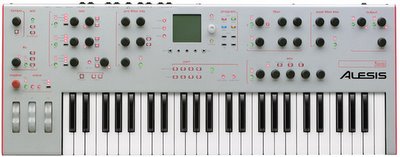
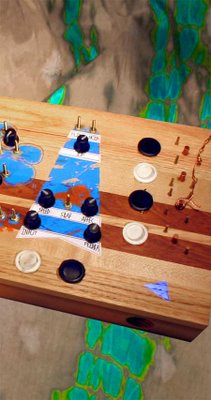
 Title link takes you there. Link at the very bottom left of the list when you get there. Demos online.
Title link takes you there. Link at the very bottom left of the list when you get there. Demos online. 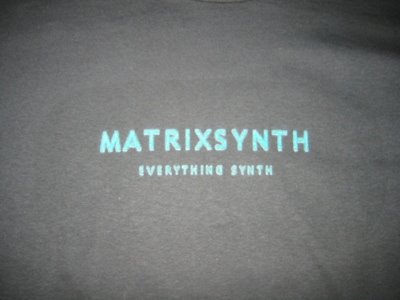
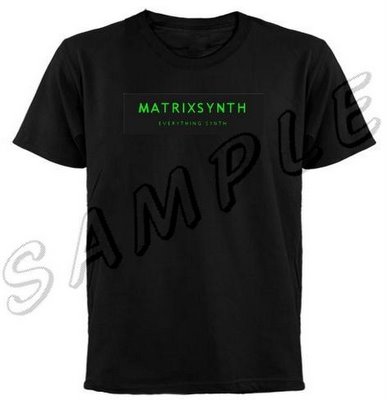 Update3: Looks like the $5 off coupons are only good on orders of $20. I upped the mark-ups for my two $19.99 items a penny to $20.00 so we can use the coupons. Other option would have been to pick up a mini-button for $1.99 or that thong. : )
Update3: Looks like the $5 off coupons are only good on orders of $20. I upped the mark-ups for my two $19.99 items a penny to $20.00 so we can use the coupons. Other option would have been to pick up a mini-button for $1.99 or that thong. : )
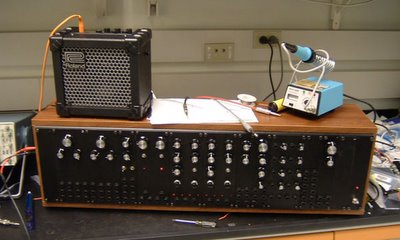



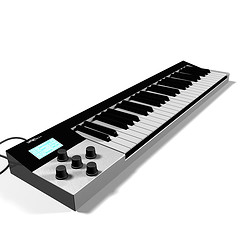
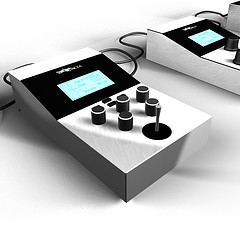
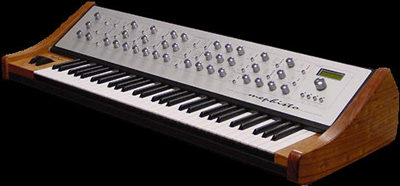



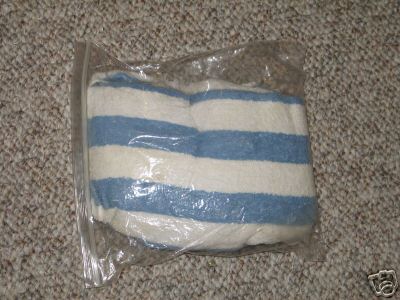
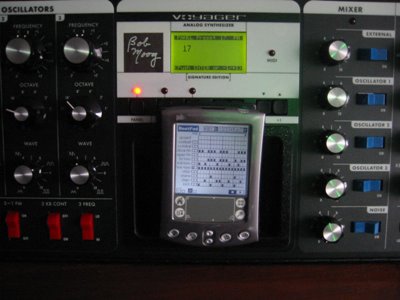 Update2: Moogulator put up a post on this. The funny thing is that I completely missed the irony in the shot - a mighty knob ladden Voyager being driven by a tiny pda. Too funny. Thanks Moogulator!
Update2: Moogulator put up a post on this. The funny thing is that I completely missed the irony in the shot - a mighty knob ladden Voyager being driven by a tiny pda. Too funny. Thanks Moogulator! 
